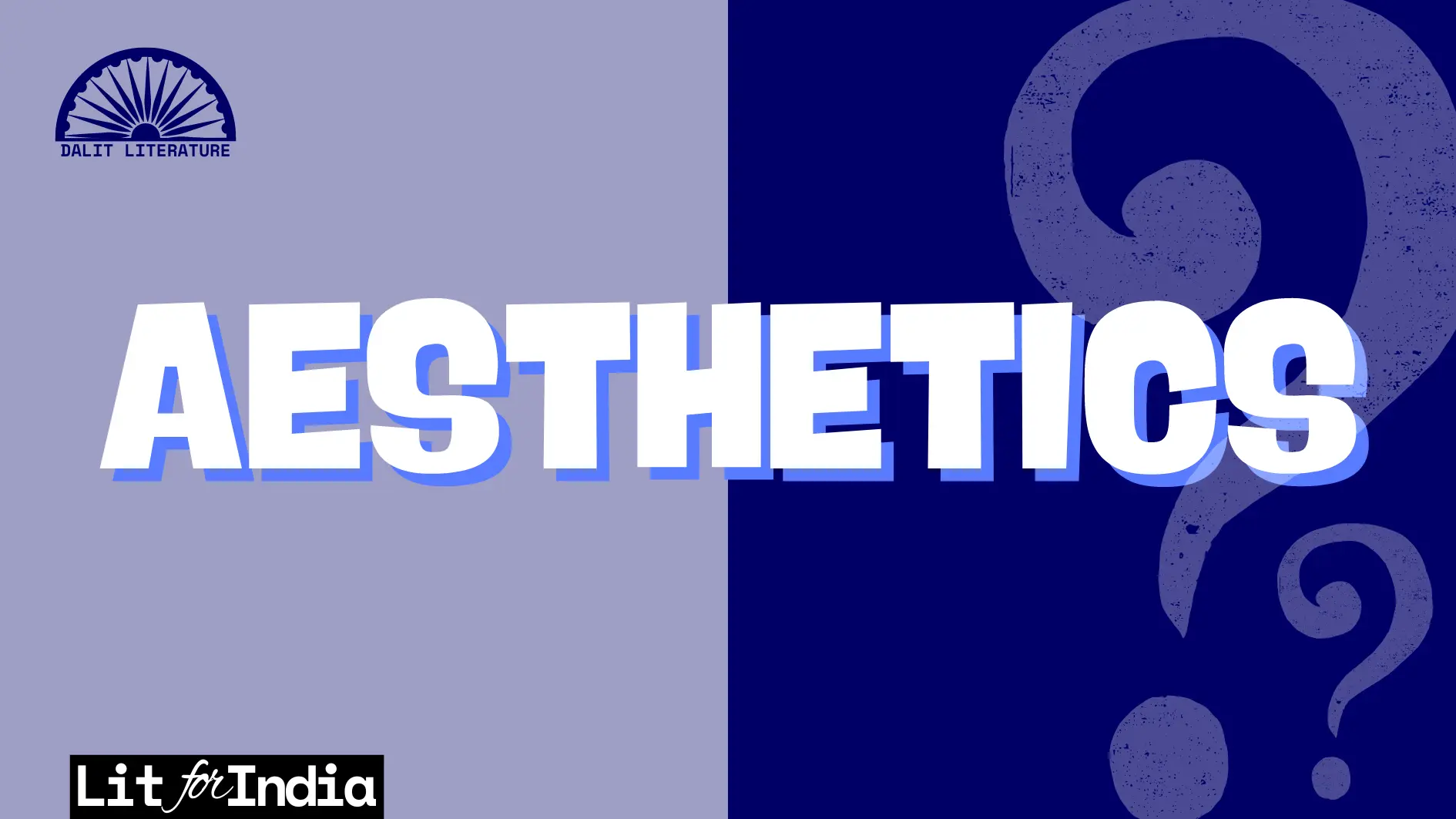Before talking about Dalit Aesthetics, it’s essential to understand the concept of aesthetics itself. Aesthetics refers to the branch of philosophy concerned with the nature of beauty, art, and sensory experiences. It explores questions such as what constitutes beauty, how we perceive it, and why certain objects or experiences evoke aesthetic pleasure. Similarly, before searching for aestheticism in Dalit literature, it is important to understand Dalit literature and its emergence. In this blog, we delve into the realm of Dalit Aesthetics, exploring how art becomes a powerful tool for social change, and how the pursuit of beauty intertwines with the struggle for liberation.

Table of Contents
Dalit Literature and Writings
Lots of people have tried to explain what Dalit Literature is, and they’ve come up with different ideas. Dalit Literature is when Dalits write about their own pain and struggles in life. It is not just about making pretty art; it is about showing what life is really like for Dalits. Some people call it Mass Literature or Literature of Action.
Dalit Literature focuses on important human values and shows how Dalits are angry and fighting against powerful systems. It asks questions about how Dalits are treated in society. People also think of Dalit Literature as a smart, meaningful, and careful way of speaking out in writing. One critic even says anything that’s smart, argumentative, and breaks from tradition can be considered Dalit Literature.
It’s seen as a revolutionary type of writing because it believes that only people who have suffered from being mistreated because of their religion or other reasons can truly change things. No matter how people describe it, Dalit Literature always puts humans first, challenges caste, race, and tribe boundaries, and fights for human freedom.
Understanding Dalit Aesthetics
The Emergence of Dalit Literary Theory
Dalit writers and critics have felt the need to educate their readership about the distinct nature of Dalit writing and how it departs from traditional and mainstream literary concerns. This desire stems from the recognition that there is a complete absence of a written tradition of Dalit values. Serious Dalit critics like Limbale and Valmiki have played a crucial role in developing what can be called a Dalit literary theory.
In doing so, they have addressed the ways in which Dalit literature has been denigrated by canonical criticism and only partially understood by sympathetic readers. Dalit aesthetics articulates the ideological position of the Dalit writer, outlining the aims and goals of Dalit literature and defining its core principles. Dalit theorists acknowledge that this aesthetic will evolve over time as Dalit life and consciousness grapple with the realities of existence.
The Foundations of Dalit Aesthetics
The Dalit aesthetic is imbued with Dalit consciousness and a specific value system. Valmiki catalogues these values as: equality, liberty, fraternity, a lived sense of justice, content rooted in feeling and given meaningful expression, the negation of efforts to cloak reality in religion and culture, the rejection of imaginary allusions, the recognition that life’s values are subject to the flux of time, and the free expression of authentic feelings anchored in empirical experience.

Dalit writers believe in the changing nature of values in an ever-shifting reality, and thus do not and cannot believe in fixed canons. However, Dalit aesthetics must grapple with certain problems before it can evolve into a cohesive credo. Limbale insists on the need to find ways to instrumentalise Dalit aesthetics and use it as a weapon against reactionary and Brahmanical criticism.
Redefining Aesthetic Experience
Where traditional aesthetics sees the end of aesthetic experience as pleasure, in Dalit literature it is pain and anguish. Its effect on the reader is to make them restless and angry. This raises the question of how the revolutionary consciousness of Dalit literature and aesthetic experience can be reconciled. Traditional aesthetics based on the Rasa Theory remains inadequate to judge Dalit literature, as it does not accommodate the Rasa of Dalit Literature.
Dalit aesthetics must also debate what is considered beautiful and valuable in its literature. Limbale argues that Beauty must be defined not through the imagination and rules that put it in the realm of the mystical and spiritual, but by considering the materiality of the work of art. The excellence of a Dalit literary product will depend on how profoundly it impacts the reader, through a consideration of how well Ambedkar’s vision is woven into the content.
The Evolving Dalit Canon
The 1990s onwards have seen a widespread acknowledgement that Dalit Literature is a force to be reckoned with. The reticence and hostility that had prevailed in the earlier years is relenting, opening up the possibility of a dialogue between Dalit and mainstream literature. As Dalit literary theory continues to evolve, it will play a crucial role in shaping the Dalit canon and its place within the broader literary landscape.
Conclusion
Dalit aesthetics stands as a powerful testament to the resilience, creativity, and unwavering spirit of the Dalit community. Through a profound exploration of lived experiences, rejection of traditional norms, and revolutionary consciousness, Dalit writers and theorists have forged a unique literary landscape that challenges existing paradigms and demands a reevaluation of beauty, value, and social justice.
As Dalit literature continues to evolve and assert its place in the literary canon, it not only amplifies the voices of the marginalised but also serves as a beacon of hope for a more inclusive and equitable society. Dalit aesthetics not only reflects the struggles and aspirations of the Dalit people but also paves the way for a more just and empathetic world where every voice is heard and every story is valued.

